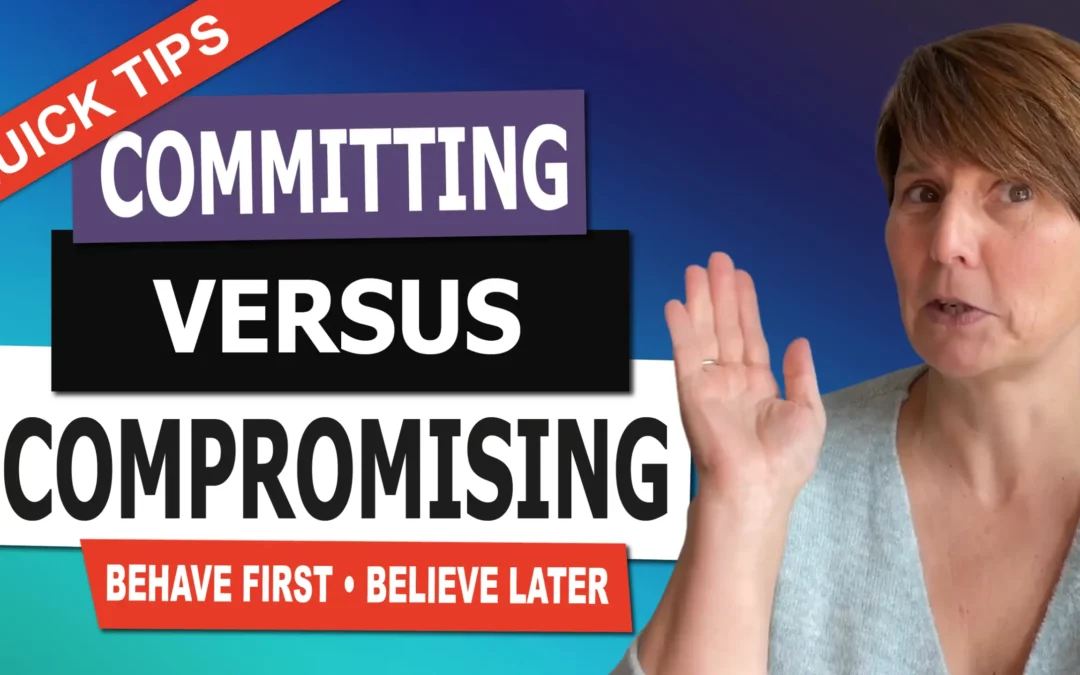Committing versus compromising: behave first, believe later (video transcript)
Have you ever walked out of a particularly contentious team discussion thinking to yourself, “Well, we’ll have to agree to disagree on that one”? I’m here to tell you that agreeing to disagree is like agreeing to leave a giant open wound in your relationship – not healthy.
Let’s just admit, when you agree to disagree, what you’re really saying is “I’m agreeing to be passive aggressive about this for the next few months,” or “I’m agreeing that I’m going to sabotage your project in hopes that at some point I’ll be able to say, ‘I told you so.'”
The alternative to agreeing to disagree is to disagree and then commit. Disagree and commit comes from Amazon’s 16 leadership principles and it’s one of my favorites. Let’s go through the steps of what to do when you do disagree but you’re ready to commit.
Step 1: Acknowledgment
The first step is to actually say aloud, “Because of this risk, or this thing we haven’t considered, or these stakeholders, I really wish we were going in a different direction and I am choosing to commit to this decision. You have me all in to make sure that this is successful.”
That’s a really positive thing to signal.
You don’t want to downplay your dissent, but you do want to say very openly and clearly that you are going commit to making this successful.
Step 2: Commitment
Next, you need to explicitly acknowledge what it means that you are committing. So you can say, “All right, I’m committing to this decision. That will mean I have to delay this project by three months and really speed up the project plan on this other project that we’re reprioritizing, and share it with my team. Anything else that you need me to do to really get behind this decision?”
Step 3: Highlighting needs
It is okay in this situation to say what you need in order to be fully committed to this decision.
So you might say something like, “I need you to come with me to my team meeting to help explain why we’re deprioritizing this project” or, “I need you to find something we can redeploy these two team members on until we ramp back up that project.”
It’s completely okay to say, “Hey, we’re a team here and I’m going take a hit to be able to commit fully to this decision. Here’s what I need to make that work.”
Step 4: New perspective
Finally, the most important step is to get your head around what it means to be committing, and what you would do if you did believe. As humans, we can behave first and believe later. That’s the power of cognitive dissonance.
So if that’s the case, just say, “Okay, if I really believed that this was the right new prioritization, what would I be doing?” You might think, “Well, I’ll be spending some time this weekend before my team meeting getting my head around what we have to do differently to make this project go faster”.
This will help you to see that you can behave in a way and then start to believe in it later.
So remember, rather than agree to disagree, opt for disagree and commit.
The Problem with Agreeing to Disagree
